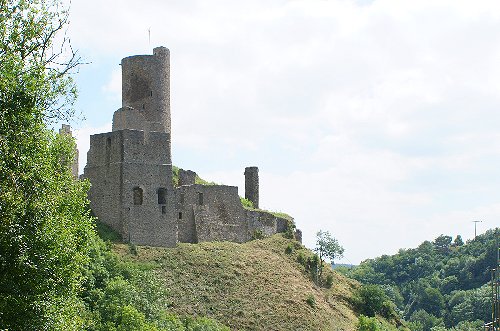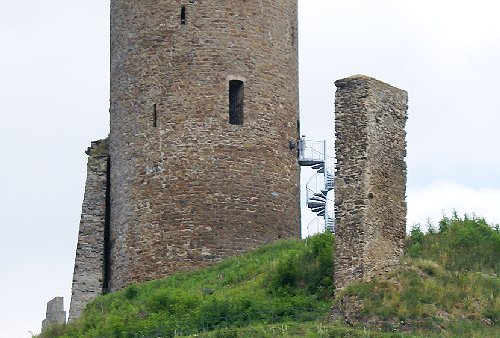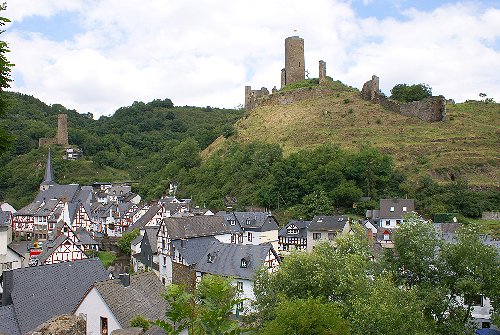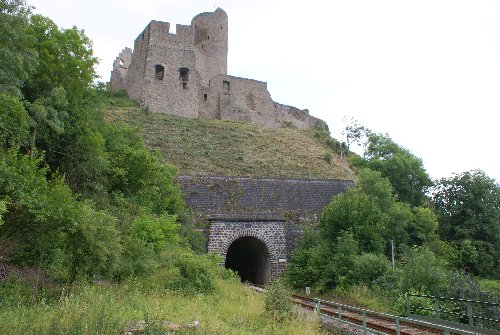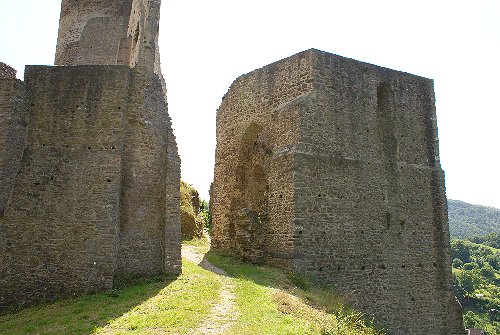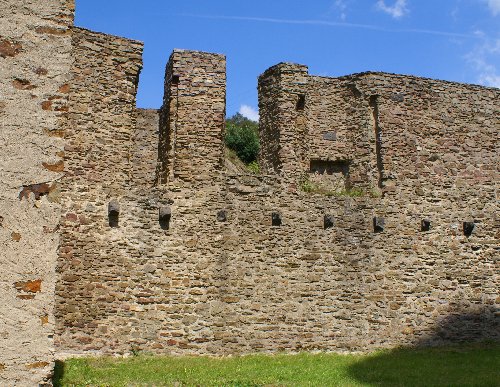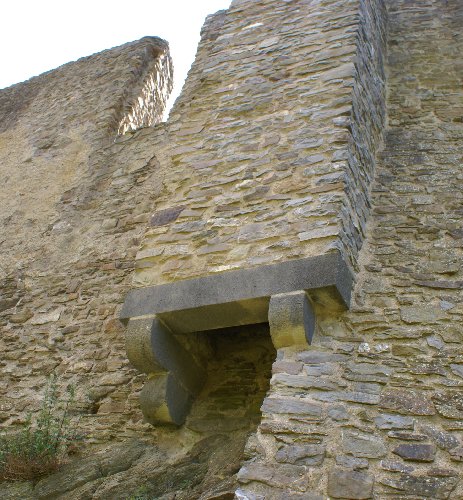The town of Monreal has two castles, the Lowenburg (right) and the Philipsburg. The Lowenburg was first mentioned in 1229, being built by Count Hermann III of the Virneburg family against the will of his brother Philip. This sparked a confrontation between the two that was only resolved through a Vergleich, or basic legal agreement where each party essentially divides up the disputed property. Regardless, it is very possible that the Philipsburg, the smaller neighbor, was built as a response to what was seen as an illegal usurpation of land rights in the area by Hermann III.
The family, though connected to the Electorate of Trier, remained friendly with the Electorate of Koln. By doing this, the Virneburg family was able to gather significant power and position to themselves in the late 1200s while still retaining property rights through the Electorate of Trier. Under Robert IV, Lowenburg was expanded significantly into the mid-1400s. When the Virneburg family's male line died out in 1545, the Leiningen family took possession of the property, though this was disputed by the Elector of Trier. This feud was disrupted by the Thirty Years War, in which Swedish troops heavily damaged both castles in 1632. In 1689, French troops destroyed both castles during the War of the Palatinate Succession. By 1815, the castle went to state ownership and received some restoration in the 1970s.
These photos were taken in 2008.
Left, a nice view of Lowenburg from the trail situated between that castle and Philipsburg.
Right, a photo showing several unique items. The most obvious might be the metal spiral stairway that goes up to the authentic entrance to the keep. But another item not so apparent is the piece of wall to the left of the tower. This is shield wall to help protect the keep from being assaulted at the base with a ram.
Left, a fascinating photo showing the rail line that goes through a tunnel UNDER the Lowenburg! Naturally, the tunnel is of recent origin, but provides an interesting example of how the Germans strive to protect national landmarks and cultural items.
Right, the main gate that takes you into the inner ward of the Lowenburg.
Below left, a view within the inner ward that shows two levels of the castle, including a fireplace at the second level. Note the studs in the wall to support the floor.
Below right, a garderobe for depositing human waste into the dry moat outside the wall.
